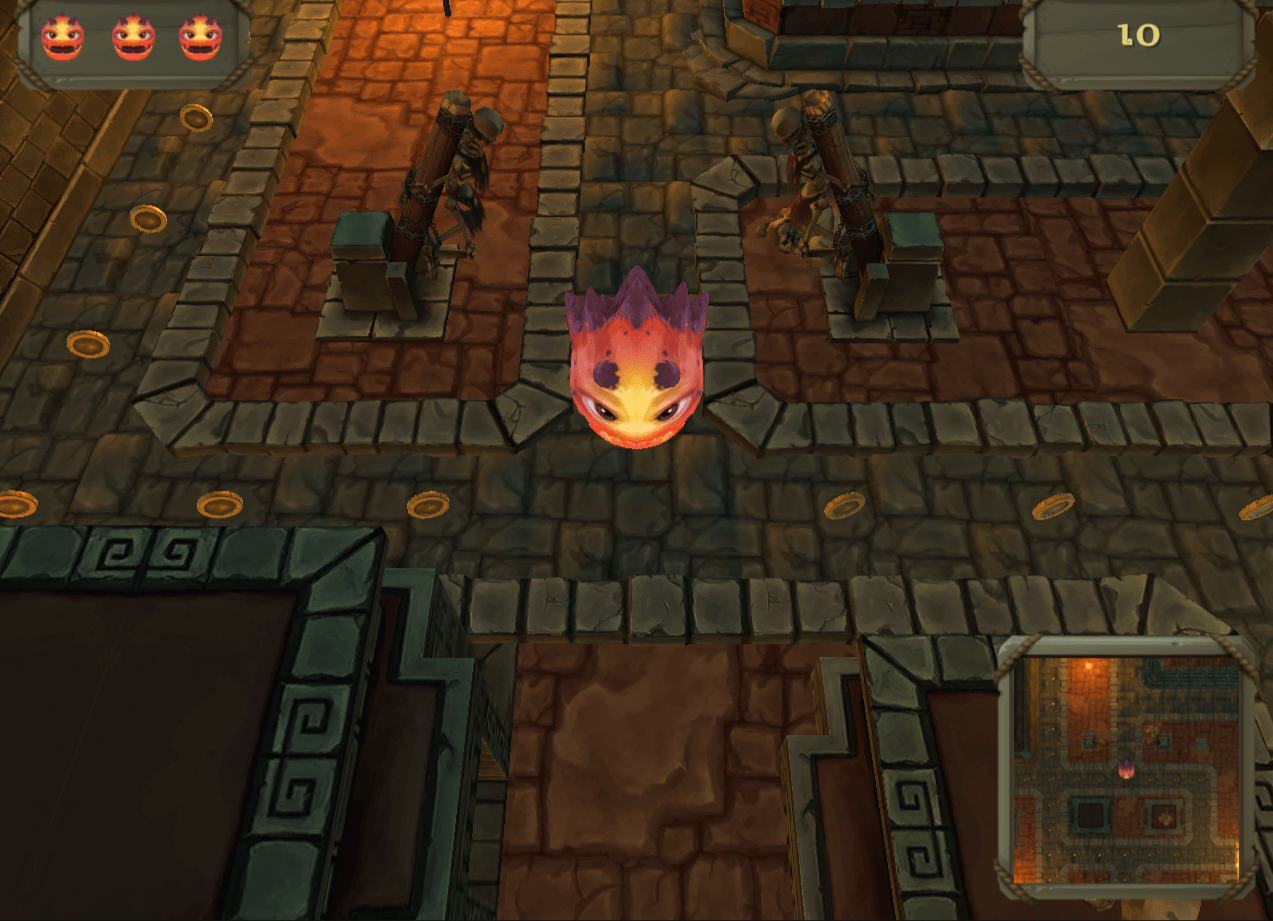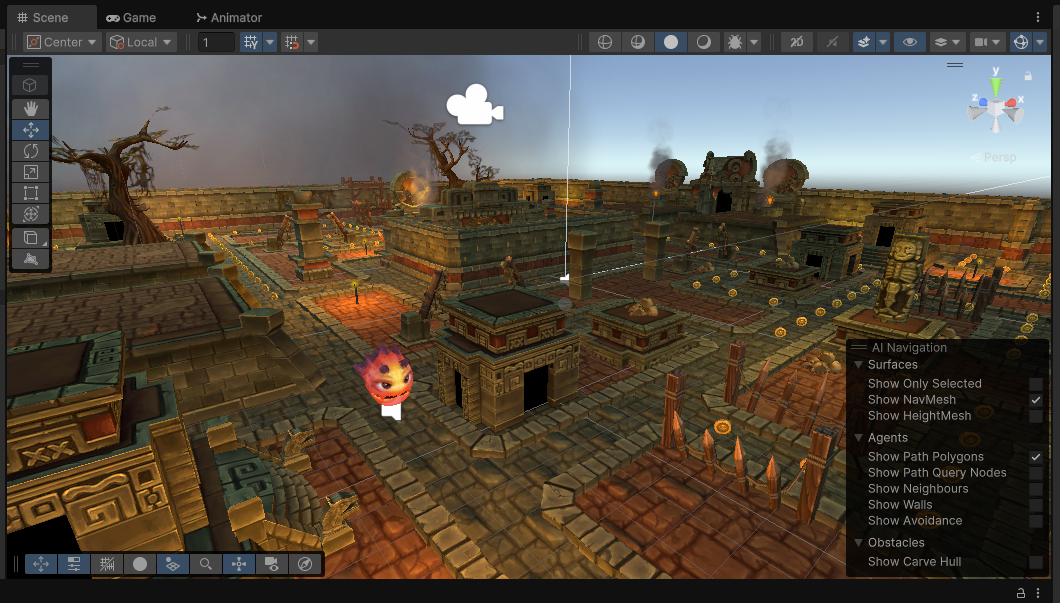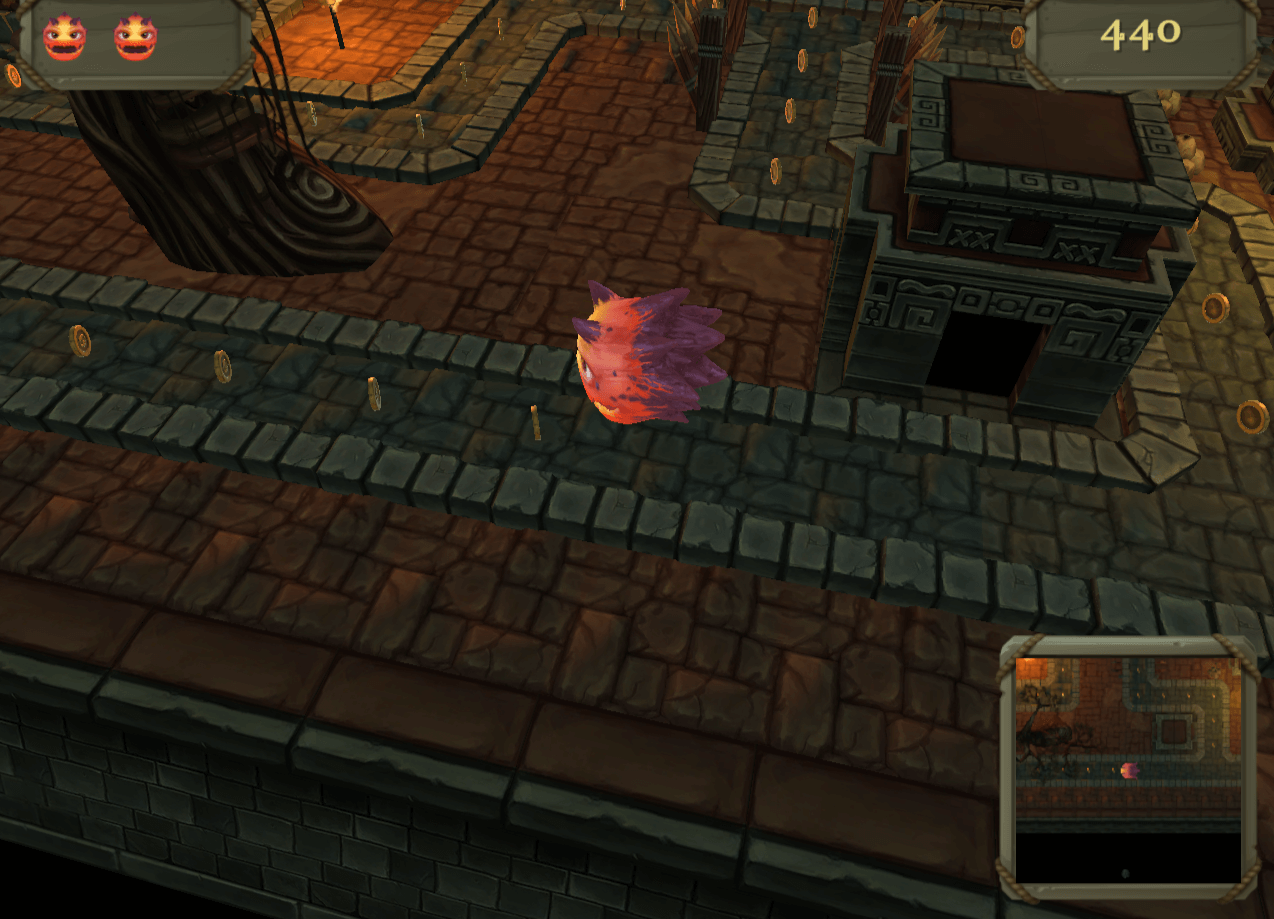Pac-Ztec
Pac-Ztec is a small but spirited experiment, a reinterpretation of Pac-Man built in 3D, reimagined within the walls of an ancient Aztec temple. What began as a simple attempt to recreate the classic arcade mechanics quickly evolved into something more personal and experimental.
At its heart, this project was never about publishing a game. It was about exploration and letting curiosity take the lead. What if Pac-Man were set in a fully environment instead of a grid? What if the movement system was rebuilt for a modern 3D engine? What could be learned by rebuilding something simple from the ground up?
Pac-Ztec became a creative sandbox to explore those questions.

Behind the Project
The project started with a tight goal: replicate the feel of Pac-Man’s grid-based movement. That led to the development of a custom waypoint navigation system, tuned to reproduce that sense of controlled motion—but adapted for a 3D space. Once that foundation was in place, the project started to branch out.

Instead of following the original blueprint too closely, Pac-Ztec took on its own identity. The maze shifted into stone corridors. The pellets became coins while power pellets flaming skulls, of course. And the ghosts became… well those are still ghosts.
Along the way, it became a tool for exploring:
- How to make simple AI systems feel dynamic
- What it takes to scale a UI that works across browsers
- How performance impacts design choices in WebGL
- And more importantly, how to build feel into mechanics

What to Expect
Pac-Ztec is a single-level prototype. There’s no progression system, no save states, and the AI is deliberately simple. It’s not meant to be a polished or finished product—it’s meant to be playable, understandable, and above all, expressive.
This is a single-level experience built with care and curiosity:
- Navigate a full 3D maze filled with coins and flaming skulls (power-ups)
- Outmaneuver temple guardians using warp zones and sharp reflexes
- Enjoy responsive controls and visual feedback, all from your browser
You can play it right in your browser. There’s nothing to install, nothing to configure. Just start the game, collect coins, avoid the guardians, and survive the maze.

A Few Known Limitations
- One handcrafted level (no level progression yet)
- Keyboard controls only (desktop recommended)
- No save system—your session ends when the game ends
- The AI is intentionally simple and not designed for difficulty scaling
- Currently in alpha, with minor bugs and polish pending
Why It Exists
We believe in making things that matter—even when they’re small. Not every project begins with a roadmap or a release goal. Sometimes, it starts with a question, or a challenge, or simply the urge to build something from scratch and see where it goes.
Pac-Ztec is one of those projects.
What began as a humble experiment to recreate the core mechanics of Pac-Man slowly evolved into a more personal creative journey. An opportunity to rethink, reshape, and reinterpret something familiar through our own lens.
Throughout development, the project served as a learning ground for exploring Unity, WebGL, and the kind of decisions that only emerge when you’re deep in the process: how to handle movement on a grid in 3D, how to design around browser limitations, how to create tension with simple AI.
But beyond the technical lessons, Pac-Ztec became a reminder of what makes this kind of work meaningful: not the polish or the size of the game, but the time spent iterating, refining, and letting ideas grow into something unexpected.

It’s a project that doesn’t pretend to be big but that doesn’t make it any less complete. Want to see what came out of all this? You can try the demo directly in your browser:
More development insights and a full breakdown of the systems behind the game will be shared in the Devlog (coming soon).